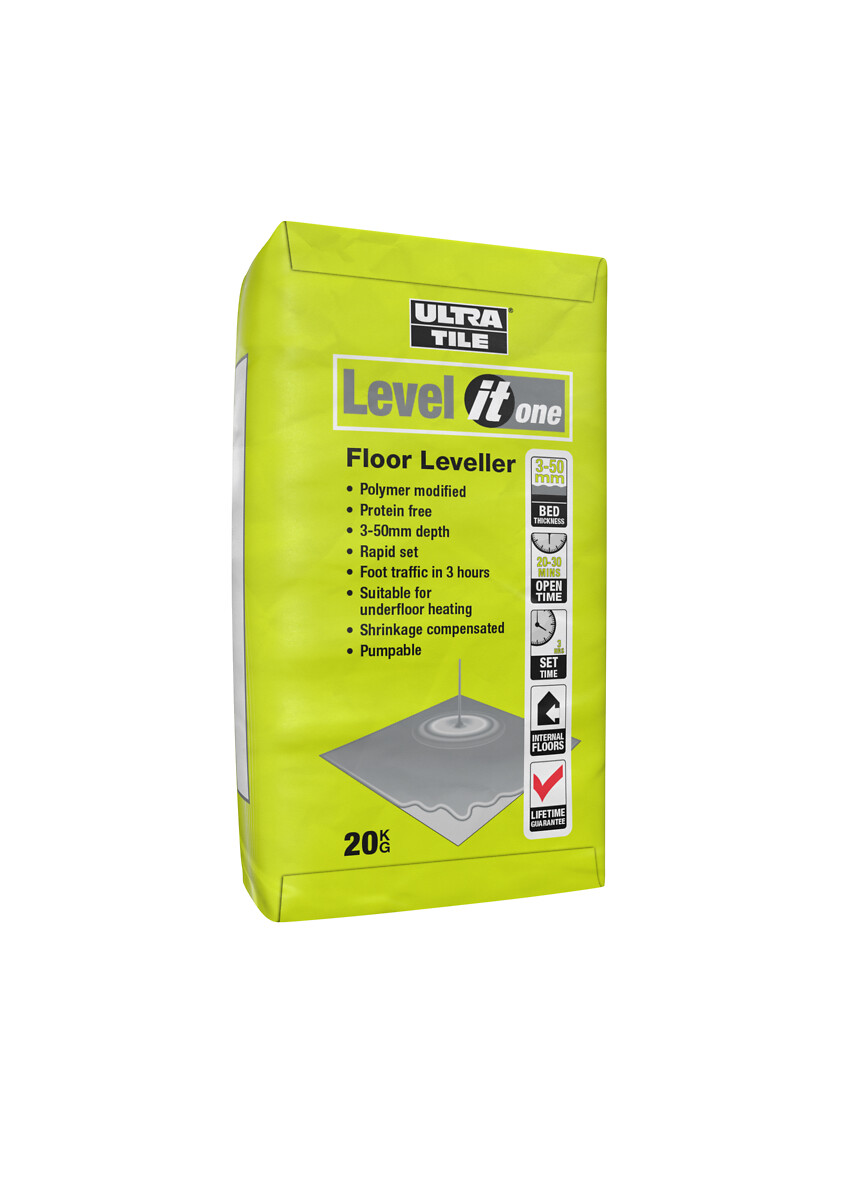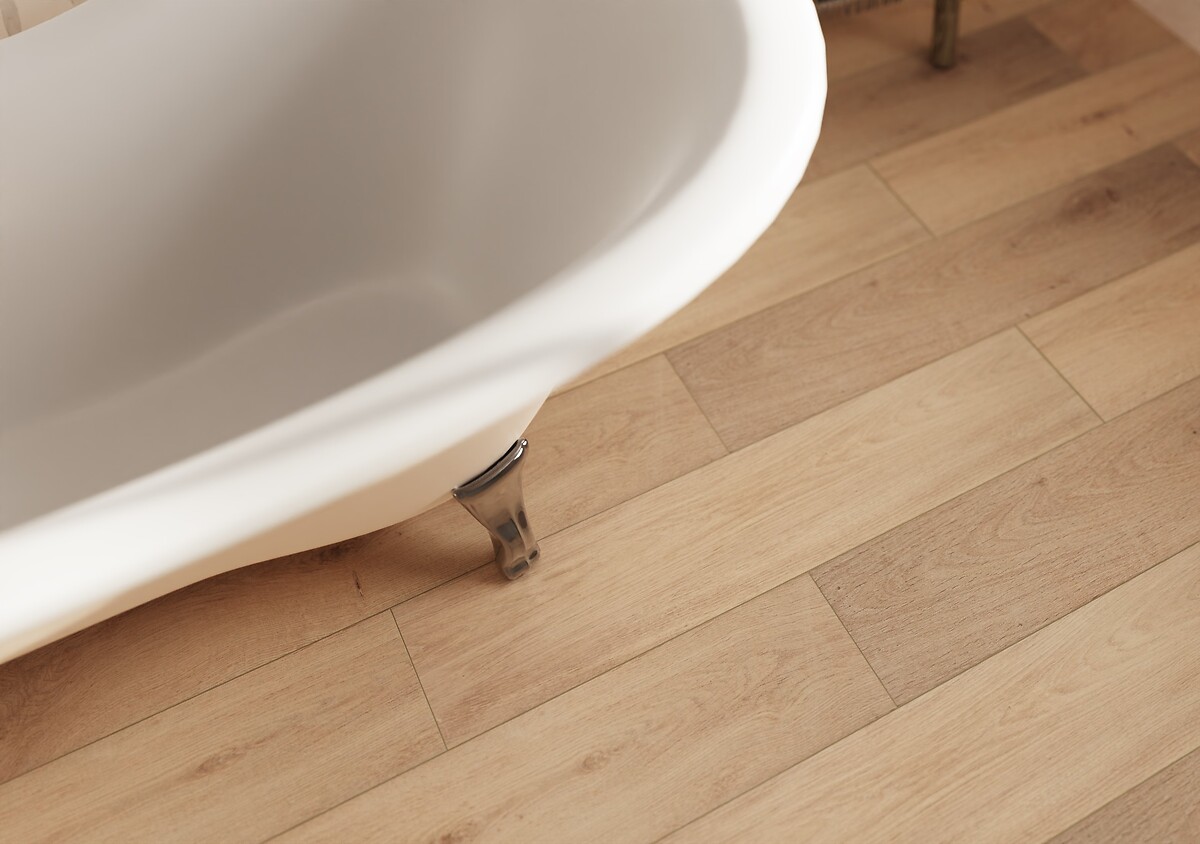Posted on Date 20th Dec 2023
How to use self-levelling compounds on floors
Our guide to laying self-levelling compound for tiling
If youre looking to create a smooth, flat and even surface in preparation for tiling at home, you need to know how to use self-levelling compound. This polymer-modified cement with high flow characteristics offers a seamless, professional canvas allowing you to create a beautiful tile design on top thatll last for many years to come.
There are specific processes to follow when tiling. So read on for our handy tips on how to use self-levelling compound for tiling projects.

Courtland Grey Pattern Tiles 33x33cm
How does self-levelling compound work?
A self-levelling compound is easy to apply and can be used widely throughout your home. Once mixed and poured, the compound will flatten across an uneven floor using gravity to self-level.
It really is that simple. Its perfect for use in rooms where the floor dips slightly or needs filling in for a more even look. Levelling compound can be used on an impressive range of substrates including concrete, screed, existing tiles and timber floors.
How to lay self-levelling compound
As with all DIY projects, its important to have a clear idea of what youre doing, and the steps needed to create immaculate results before using a self-levelling compound. There are many things to consider, so heres our handy step-by-step guide.
Preparation
Firstly, make sure your surface is appropriate for self-levelling. If theres a discrepancy of more than 5mm across the surface area, then a self-levelling compound might not be the best option.
In short, if the dip in your floor is too severe or theres a dramatic slant then you might need to go back to the drawing board and look for another way to even things out. Consider backer board instead. For advice on how to use backer board click here.
If your floor is suitable for self-levelling, thoroughly clean the substrate to ensure its free from dust, debris and other contaminants which might prevent the leveller from bonding to the surface properly including floor paint, smoothing compounds, old adhesives, surface laitance and more.
And if the surface you want to level out is highly polished, this should be mechanically abraded as a lightly textured surface is easier for the compound to grip to.
Once the floor is clean and dry, you can apply a primer. Allow to dry, following the manufacturers instructions, before pouring over the self-levelling compound.
How much self-levelling compound do I need?
The amount of self-levelling compound you need will depend on the square footage of the room you want to level.
For example, a 50lb bag will cover approximately 40 square feet at inch thick. So, with this in mind, its important to work out the surface area of the floor that needs evening out to ensure you buy the right amount of compound.
How to mix self-levelling compound
Take care to mix the self-levelling compound correctly to make the mixture as easy-to-pour as possible. Read the manufacturers instructions to ensure the powder to water ratio is correct.
Too much water will affect the surface finish and drying times. The water you use should also be cold as warm water will affect the products working time.
As a rule, the mixing process will start with adding water to a clean bucket. Make sure that the bucket is absolutely sparkling with no bits of old cement or residue from another project that could potentially ruin the aesthetics of your smooth surface.
Gradually add the levelling powder using an electric drill with a mixer attachment to stir continuously. Again, the mixture should be free of dried products or bits that could flake off into the mixture.
Once all the powder has been added, keep mixing for a further two minutes to reduce any air entrapment. The mixture should be beautifully smooth and lump free, ready to pour seamlessly onto the floor.
Remember, youre aiming for an ultra-even surface, so if there are even any air bubbles or lumps in the mixture, this could ruin the overall effect.
Laying
Laying the self-levelling compound is easy, but again, there are a few things to consider before pouring the mixture onto your floor, including where to start pouring and what tools to use for that perfect finish. Heres what you need to know.
How thick can you lay self-levelling compounds?
Self-levelling compounds arent designed to make huge corrections. Remember, theyre mostly suitable for uneven surfaces with a discrepancy of less than 5mm.
Make sure that your self-levelling compound isnt overly thick. Typically, a thickness of about an inch will be enough to hide any surface flaws. However, some compound variants can offer a thickness of up to five inches.
How to lay self-levelling compound
When it comes to laying the self-levelling compound, simply pour it into the floor and spread with the smooth edge of a steel trowel. But dont just start anywhere.
Its really important to work from the furthest point of the room, back toward the point of entry so that you dont get stuck on the wrong side of a newly cemented floor. Imagine having to tiptoe back over your hard work.
If youre levelling a particularly large surface, dont be afraid to divide the room into sections to make things easier. Its important to maintain a wet edge to ensure adjacent mixes blend in correctly.
Finally, use a spiked roller to prevent air bubbles from settling on the surface and creating an uneven texture.
How long do you leave self-levelling compound to dry?
The drying process is just as important as the laying process. Where possible, prevent the compound from being force dried by drafts or too much sun. Draw blinds and use draft blockers in extreme weather so that the compound doesnt crack.
Ideally, the room should be kept at a temperature of 20C with good ventilation and a maximum air humidity of 75%. Finally, make sure everyone in your property knows that the floor needs to dry and cant be walked on. Family life can be busy, but one slip-up could ruin all your handiwork.
The amount of time it takes for a self-levelling compound to dry depends on the compound used. Drying time can be anywhere between one and six hours, so always read the instructions. As a rule, its wise to leave the compound to dry overnight to be sure.
Other considerations for laying self-levelling compounds
Here are some FAQs that might help you on your self-levelling journey.
Can I apply a self-levelling compound in layers?
The answer to this is yes, so long as the first layer is cleaned, primed and abraded to create a textured surface for the compound to grip onto.
Can you use a self-levelling compound on floors with underfloor heating?
Many compounds are indeed suitable for use with underfloor heating. Simply check the product details carefully.
How to use self-levelling compounds over tiles
If youve got a tiled floor that needs a revamp but cant stand the thought of pulling it all up, then covering the surface with a self-levelling compound is ideal.
The first step is to remove any old grout that could come loose and interfere with the smoothness of your cement mixture. You then need to thoroughly clean all the tiles to ensure theyre free from particles that could again affect the overall look. If your tiles are super shiny and smooth, youll need to lightly abrade them to ensure the levelling compound grips tightly.
Why use self-levelling compound
When it comes to tiling, having a smooth, even surface to work from is of paramount importance. If your surface is uneven, damaged or cant support the weight of your tiles, youre setting yourself up to fail.
So, using a self-levelling compound helps to create a reliable, solid base that provides the perfect canvas for your tile project.
Uneven floors can also look highly unattractive and even if theres a slight discrepancy in measurements across a surface area, cement, grout and even the tiles themselves can crack over time. So, its always best to prepare your surfaces properly to avoid problems down the line.
Watch our self-levelling video
Tile Warehouse has teamed up with hit YouTuber Proper DIY to show you how to mix as well as apply self-levelling compounds at home.
Need more information?
If you have any questions regarding self-levelling compounds for your home, then feel free to contact our Customer Services team using our web chat facility.




